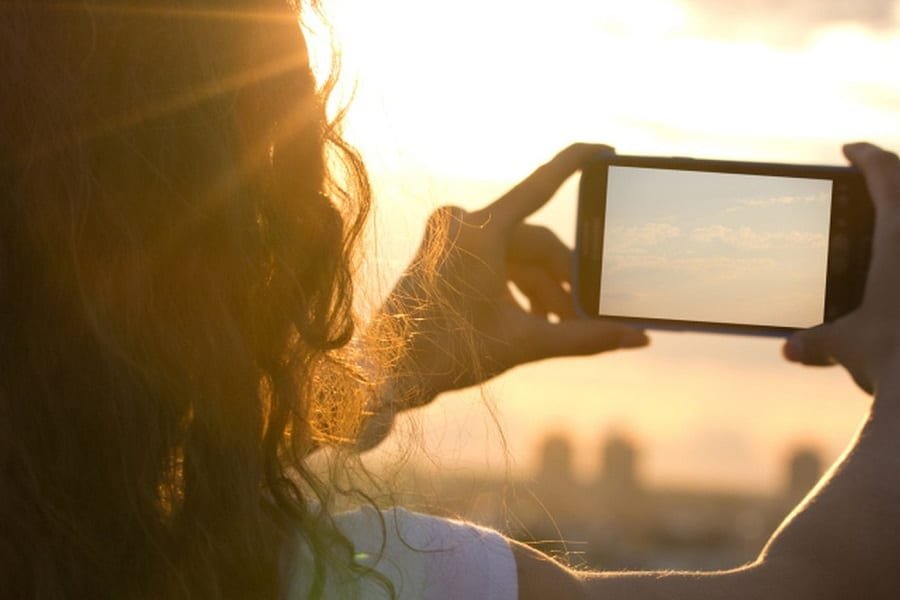You want the short answer?
Yes, sunlight exposure can damage your phone’s camera lens, as well as the camera itself.
Cameras lens sun damage could create deeper problems as well, which we’ll get into in a moment.
To really know if your camera stands the risk of being damaged, we first need to explore the more common phone camera lens material and how UV rays affect said materials.
Strap in.
Contents
Does Direct Sunlight Damage Phone Cameras?
In short, yes, the sun can absolutely damage your smartphone camera.
Even when you look at superior smartphone cameras like on iPhones, they still use a similar production method just like other smartphones use.
They have light sensors in the cameras to pick up and filter light.
The remarkable thing about smartphone cameras in general is their size.
You look at the photos produced by enormous Nikon camera lenses, and then you look at what an iPhone can do with a 2mm deep camera, and it’s just mind-boggling.
The sun (and any overly bright thing) can damage the sensors in your camera, which will alter the way that it attempts to refract and filter light.
Enough damage could cause the sensor to break entirely, which would render the camera 100% useless.
But don’t worry; there’s a few more questions we have to answer first, and then we’ll get into some preventative measures to help your lens and camera stay nice and safe.
Can You Take a Picture of the Sun on Your Phone?
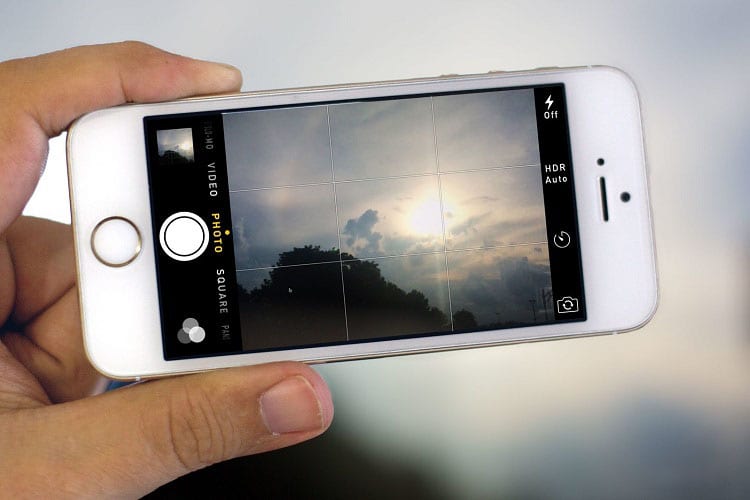
You can, but it will come at a cost.
When you photograph the sun, you’re using the lens as a magnifying glass, and your sensors are the ants.
Your sensor is designed to detect and filter light, but when there’s too much of it, permanent damage can be done.
When we had an eclipse in 2019, you wouldn’t believe how many people permanently damaged their cameras simply because they didn’t know.
For many people, their smartphone camera is just a gateway to social media and talking to followers, but to us, smartphone photography is something serious.
Even if you use protective lens attachments for your front-facing camera, you’re still running a seriously high risk of doing permanent damage.
They may help add a few seconds of protection to direct exposure, but they shouldn’t be used to photograph the sun if you can avoid it.
Time Lapse Photos of the Sun Pose a Higher Risk
Time lapse photos are an excellent way to really show the true beauty of nature and the time passing from the beginning of one day to the end.
However, they could also be damaging if not done properly.
Many photographers will set up their tripod and camera, and leave it on time lapse mode, then let it be.
They don’t realize that if the sun starts setting directly overhead and in view of the camera, that the sun exposure could be damaging the lens and sensors slowly over the remaining time until sundown.
Don’t get me wrong, time lapse photos are great, you just have to know how to take them effectively.
Consider positioning your camera in the shade and facing one direction while the sun rises, so you can get about six hours or so of photos, and then switching your view.
Six hours of a time lapse of one location can be gorgeous enough, but you can then jump cut (if you’re doing this in a video format) to another angle of the same location.
This allows you to maintain the same subject and still show the transition of sunrise to sunset, but without putting your camera in direct harm.
Smartphones May Incur Less Damage Than Traditional Lenses
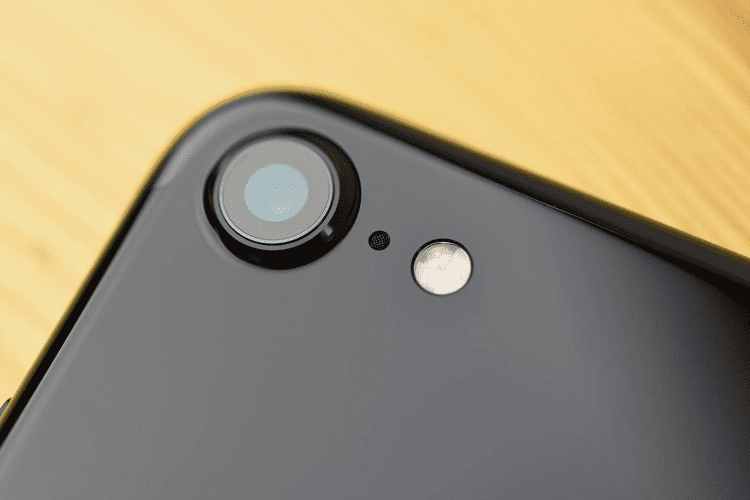
This is where it gets weird and people usually don’t believe me, but it’s true.
Because the distance from the lens to the sensor on your smartphone is shorter, it requires a thinner glass lens.
That means that there isn’t as much surface area to build up heat like a magnifying glass.
But then look at a 50mm camera lens, and how the light hits it.
It heats up and practically burns the sensor located inside of your camera, which can accelerate the damage much faster than a smartphone.
That doesn’t mean one is better than the other.
In the end, they can both break from sun exposure, it’s just a cool bit of information that shows the contrast between both types of cameras.
iPhone Camera Lenses Are Built Tough
Many camera lenses are made out of glass.
It’s inexpensive, it provides clarity, and there’s nothing wrong with them.
But remember that magnifying glass effect I was talking about? That’s mostly because of glass.
On an iPhone, they use sapphire crystal lenses to not only be more scratch-resistant, but provide great clarity without heating up the way glass lenses do.
All this means is that you run less of a risk of permanently damaging your phone’s camera lens, but everything I’ve said still stands: don’t photograph the sun.
Leave that to the Hubble.
Lens Scratches Can Make Sun Damage Worse
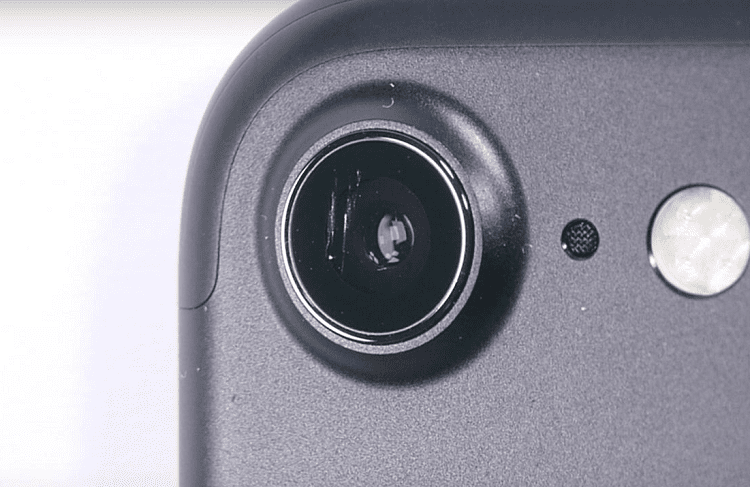
I just mentioned how the shorter lens length can help you out, but it can also be damaging in its own right at the same time.
Because they’re easier to scratch, you can end up with divots in the glass, which can actually heat up your sensors even faster.
Depending on the angle and cut of the scratches, they can accelerate the way that light travels and bring more harm to your sensors.
It’s important to take care of your lens, which is why we’ve outlined some tips to help you out.
How to Protect Your Phone Camera the Right Way
Now it’s time to talk about protecting the lens from actually getting scratched, which would only increase the damage to your phone’s light sensors.
1. Use a Rubber Case
Why rubber?
While some people like hard cases because of their slim design, they offer less camera protection.
In truth, neither offer perfect lens protection, but because rubber cases are a bit bulkier, you’re keeping your camera lens off of tough surfaces which can prevent scratches.
2. Carry Around a Cleaning Cloth
While dust isn’t going to damage your lens, keeping your lens nice and clear allows you to see any imperfections or damages in the glass, so you can stay on top of things.
The last thing you want is to be unaware of your damaged lens, then go to take a photo, and notice the disparity in the finished product.
3. Avoid Harsh Surfaces
Tables, countertops, and concrete walls if you’re standing outside for a smoke—don’t put your phone down on any of them.
If you’re at home, use a microfiber cloth to keep your phone on while it’s on your desk or the kitchen counters.
This cradles the lens and prevents damage from occurring.
Technically, You Could Take a Quick Photo of the Sun
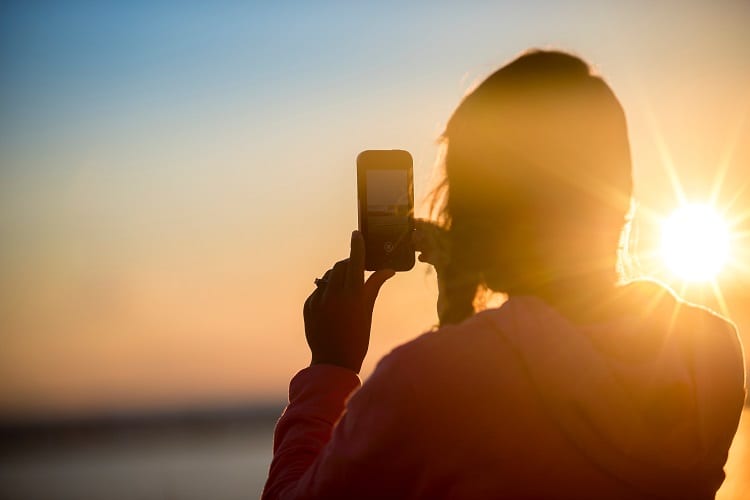
Our main concern here is the sensor, but we’re also not manufacturers of camera lenses and light sensors.
This is going off of professional experience from using these cameras, not so much with dissecting them and testing out each individual part.
There are a lot of people who used high-end lenses and cameras to photograph the 2019 solar eclipse that we mentioned earlier, and they were fine afterwards.
A big part of sun damage to your camera has to do with prolonged exposure, such as with the time lapse segment earlier.
So while the lenses on some smartphones might be stronger than the lenses on high-powered cameras, there is more to heat up and warp in a traditional camera lenses.
DSLR cameras use metal shutters, which take a long time to heat up and take the brunt of the heat.
The glass only acts as a magnifier, so it doesn’t break or get damaged from the heat of the sun at all.
When that metal heats up, it warps the plastic components of a camera. That takes some time, but it could happen.
With a smartphone camera, you could take a really quick picture of the sun and probably come out with no harm, but then it’s not going to be a very good picture, is it?
There will be no focus, no time for the lens to adjust, and it wouldn’t come out well.
So while you technically could snap a fast photo of the sun without permanently damaging your phone camera, it’s still ill-advised.
Better Photos, Longer Lens Life
Harmful UV rays are always a danger to us and our personal belongings, and the best way to approach caring for those personal belongings going forward is to avoid direct sun exposure.
While your iPhone is durable and built to last, exposing it to unnecessary damage is pointless.
Keep them safe, keep them out of continued sunlight, and you’ll be okay.
iPhones stand a better chance than many Android manufactured phones, but if you take care of them, then it doesn’t matter which phone you’re using.

